The retail landscape is undergoing a dramatic transformation. A recent study revealed that 86% of buyers are willing to pay more for a superior customer experience.
Gone are the days when simply having a great product was enough. Today’s shoppers crave a multifaceted experience that goes beyond the transaction itself. They expect brands to tell a story, connect with them on a deeper level, and leave a lasting impression. This is where custom packaging takes center stage.
More than just a box or a bag, custom packaging becomes a powerful tool for retailers to refine their brand and create a memorable, personalized experience for their customers.
Rising Retail Packaging Trends & How Custom Packaging Responds
The Rise of Brand Storytelling

Consumers are drawn to brands with a story, a purpose, and values that resonate with them. They want to connect with the company behind the product, understand its mission, and feel a sense of shared identity. This trend presents a golden opportunity for brand-conscious boutiques and e-commerce entrepreneurs.
Think about your favorite brands. What makes them stand out? Chances are, they’ve woven a compelling story that resonates with you on an emotional level.
Let’s take Toms Shoes, the company that designs and markets a variety of products including shoes, eyewear, coffee, apparel, and handbags.
Tom’s story revolves around the concept of “One for One.” For every pair of shoes purchased, Toms donates a pair to a child in need. This simple yet powerful message has resonated with millions of consumers. By using their packaging to tell their story, Toms not only reinforces their brand identity but also motivates customers to participate in their social mission.
Refined Unboxing Experience
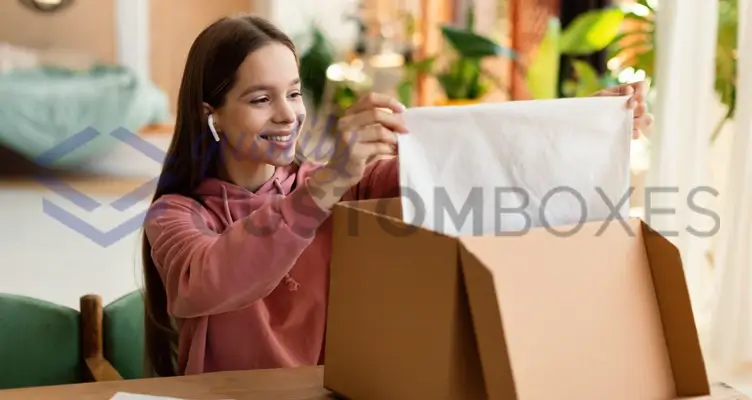
Platforms like YouTube and Instagram are overflowing with unboxing videos. Consumers are increasingly influenced by these videos, where the excitement and satisfaction of receiving a beautifully packaged product is on full display. A well-designed unboxing experience can generate excitement and encourage viewers to share the video, promoting your brand organically.
The unboxing experience has become a phenomenon largely driven by the social media savvy of Gen Z (born between 1997 and 2012). This digitally native generation thrives on sharing experiences online, and the unboxing experience offers a perfect opportunity for them to showcase their purchases and connect with others.
Remember, a well-designed unboxing experience can be the key to unlocking a passionate customer base. By strategically using custom packaging, e-commerce entrepreneurs can transform the unboxing experience from a simple act of opening a box to a powerful marketing tool.
Sustainability: A Growing Imperative

66% of global consumers don’t hesitate to pay more when it comes to sustainable products. The concept of sustainable packaging extends beyond just the materials used. Retailers can further reduce their environmental footprint by employing thoughtful design practices.
What you can do includes utilizing custom packaging solution that is perfectly sized for your product, eliminating the need for excess void fillers or bulky boxes. You can also design reusable packaging solutions that can be repurposed by customers, such as tote bags or storage containers.
Scalability and Consistency
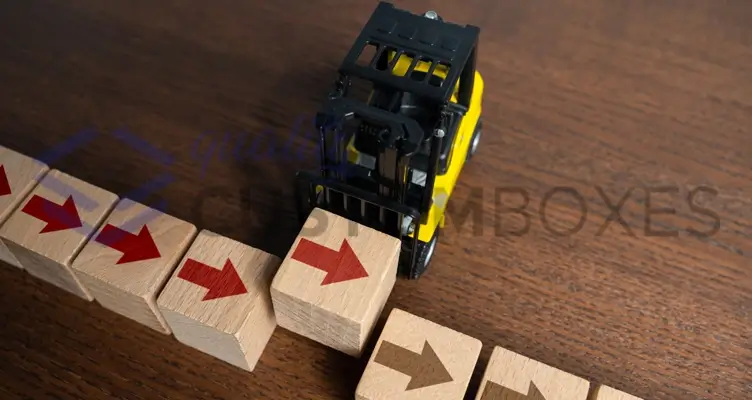
Scalability refers to a system’s ability to handle increasing demand or workload. A scalable system allows a business to expand its customer base, product offerings, or geographic reach without experiencing significant disruptions.
Consistency is about delivering the same reliable experience to customers, regardless of location, time, or employee interaction. Standardized processes ensure a baseline level of quality in products, services, and customer interactions. This minimizes errors and maintains a positive brand image.
Custom packaging acts as a bridge between scalability and consistency. It allows businesses to streamline operations and expand their reach while maintaining a unified brand identity across all locations. This is particularly evident in the case of Chipotle Mexican Grill, a popular fast-casual restaurant chain with over 3,000 locations worldwide.
Chipotle exemplifies the successful implementation of custom packaging to maintain brand consistency. Their team uses custom-designed aluminum foil for burritos and bowls, prominently featuring the Chipotle logo and messaging that emphasizes their focus on fresh, locally sourced ingredients. This creates a consistent visual experience and reinforces their brand message across all locations, regardless of scale.
The Power of "Me"
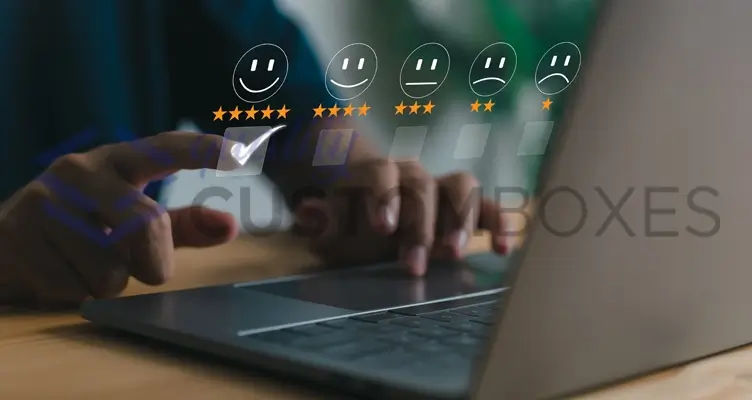
A McKinsey & Company report underlines that 71% of consumers expect companies to personalize their interactions with them. This expectation extends beyond the online shopping experience and spills over into the physical world, influencing how customers perceive brands and their commitment to building relationships.
Custom packaging, facilitated by variable data printing technology, offers retailers a means to meet this demand for personalization. Variable data printing allows for the inclusion of unique elements on each package, transforming standard packaging into personalized experiences.
For instance, a simple addition like printing a customer’s name on the box can instantly create a sense of exclusivity and recognition. Advanced printing techniques take personalization further by generating unique design elements on packaging based on individual customer data.
One notable example of this approach is seen in Coca-Cola’s limited-edition bottles released during certain campaigns. These bottles feature popular song lyrics or individual names printed on them, adding a personalized touch to the familiar packaging. Such personalization not only encourages collection but also injects a fun and memorable element into the brand experience.
What is Hyper-personalization in Retail?
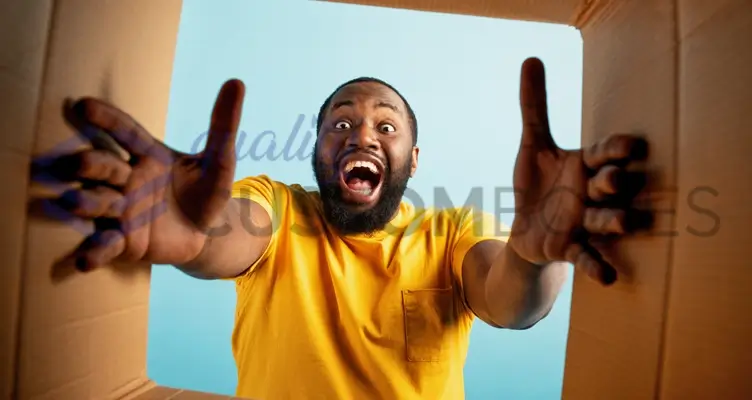
Remember that feeling of frustration when browsing a store and encountering generic recommendations? You’re not alone. Today’s consumers crave a hyper-personalized shopping experience, and retailers are taking notice.
Hyper-personalization goes far beyond simply calling customers by name or keeping track of past purchases. It’s an effective tactic that makes use of both historical consumer behavior gathered from multiple sources and real-time data. This allows retailers to paint a complete picture of their customers: who they are, what they like, and what they need.
With all this valuable information, stores can create unique shopping experiences for every person. Think about shopping online and seeing items that match what you’ve been looking for. Or imagine going into a store and having staff suggest things based on what you’ve bought before. This kind of personal touch makes customers feel really special and understood.
When shopping feels impersonal, 71% of consumers get frustrated, while 91% express a preference for brands that offer tailored offers and recommendations. This underscores the urgent need for retailers to develop distinctive shopping experiences, set themselves apart, build customer loyalty, and drive revenue growth.
What are the Megatrends in Packaging?
Stronger Packaging in Online Shopping
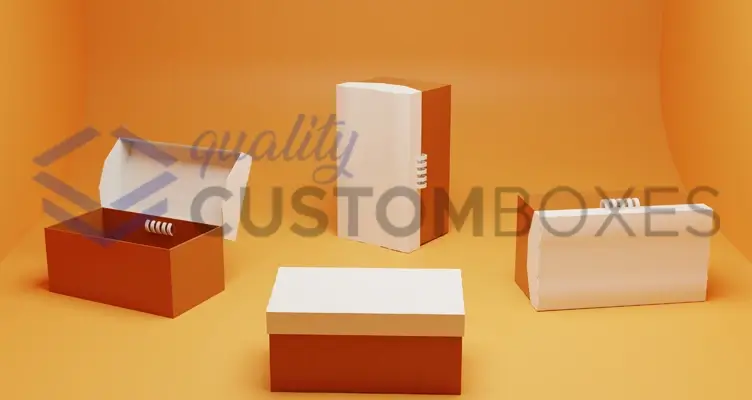
The e-commerce boom, fueled by the pandemic’s restrictions, has led to a surge in online shopping. While convenient for consumers, it presents a challenge for businesses: how to ensure products reach their destination safely and efficiently.
The ideal e-commerce packaging needs to be lightweight for easier handling and lower shipping costs, puncture resistant to protect products during transit, and transparent to allow customers to see their purchases at a glance and verify their orders.
Plastic packaging can address these needs, offering convenience and clarity. Quality Custom Boxes understands this and offers a range of plastic packaging solutions that strive for a balance, meeting brand needs for practicality and product visibility, addressing sustainability concerns, and fulfilling customer expectations for both convenience and eco-consciousness.
Clever Packaging Innovations

Recent increases in digitalization and globalization are impacting the packaging industry in two significant ways:
- With the growth of online shopping, packaging has become more crucial than ever. Customers aren’t just interested in what’s inside the package; they’re also paying attention to what the packaging itself communicates. Especially when there’s limited interaction with sales teams, packaging plays a vital role in brand recognition. When used effectively, packaging can convey a brand’s values and mission.
- Another effect of increased digitalization is the rise in challenges for brand owners. Issues like logistics problems during the pandemic have led to instances where trucks and their contents go missing, creating opportunities for counterfeit products to enter the market. Brand owners and manufacturers in industries such as luxury cosmetics, pharmaceuticals, and food are investing in smart packaging and solutions to protect their products’ integrity. Various anti-counterfeit technologies, including digital solutions, are being explored to combat the counterfeiting of packaged products.
Easy-to-Use Packaging for Different Types of Customers
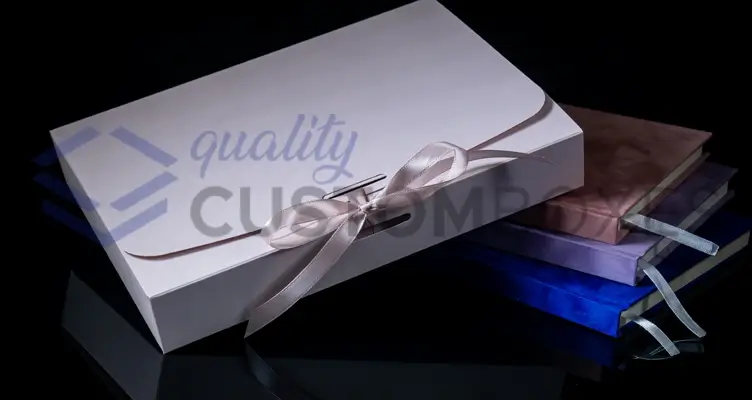
The world is experiencing significant changes in its population as we expect to welcome an additional two billion people over the next thirty years. According to the United Nations, by 2050, the Earth’s population is projected to reach 9.7 billion, up from the current 7.7 billion.
These shifts create opportunities for new products and services. As incomes rise, consumers are likely to spend more on consumer goods. With longer life expectancy and a growing middle class, global brands will attract more shoppers. Urbanization will also lead to more single-person households.
With busier lifestyles, consumers will seek convenient and time-saving solutions across all product categories.
From a packaging standpoint, brands should expect an increase in portable and on-the-go packaging in smaller sizes. Packages need to be easy to open for people of all ages, and flexibility is key. The global flexible plastic packaging market is projected to grow at a rate of 4.5% annually until 2025, according to industry estimates.
Quality Custom Boxes is prepared for this trend with a range of flexible and convenient packaging solutions to meet customer needs for various purposes.
Making Packaging More Eco-Friendly
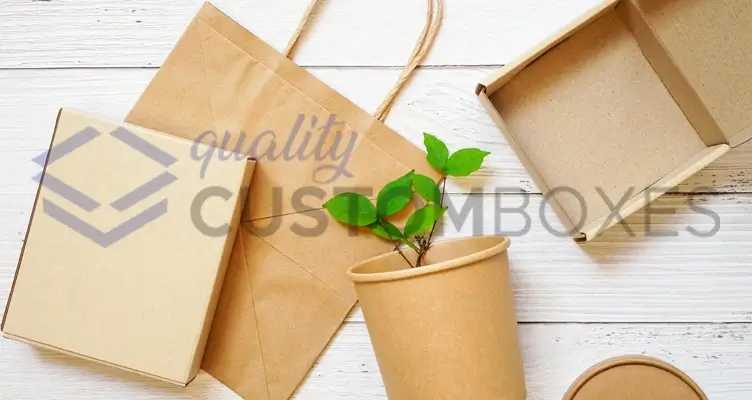
Sustainability is becoming a big focus in the packaging industry as regulations respond to concerns about single-use containers. Brands want to be more sustainable by improving product shelf life, reducing carbon emissions, and promoting recycling. Packaging design plays a crucial role in achieving these goals.
One way to be more sustainable is to use lighter or thinner packaging over time. However, in many cases, using packaging made from multiple materials can be better than using just one material because it can improve shelf life and save costs. For both brands and consumers, longer shelf life means less waste.
Manufacturers need to find the right balance between using single-material and multi-material packaging. They have to decide what works best for them, considering both performance and sustainability.
What are the Different Types of Retail Packaging?
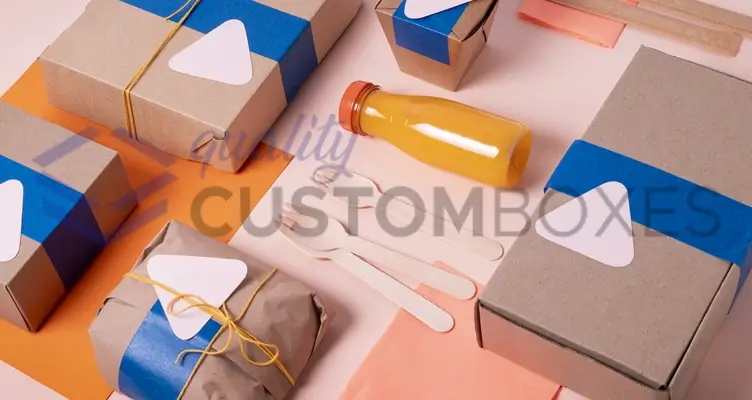
Packaging is often the first impression your product makes on a potential customer. Beyond its practical function of protecting your product, effective retail packaging really helps, grabs attention, conveys brand identity, and influences purchasing decisions.
Here’s a breakdown of the most common types of retail packaging, highlighting their strengths and weaknesses to help you make an informed decision:
Paperboard Boxes
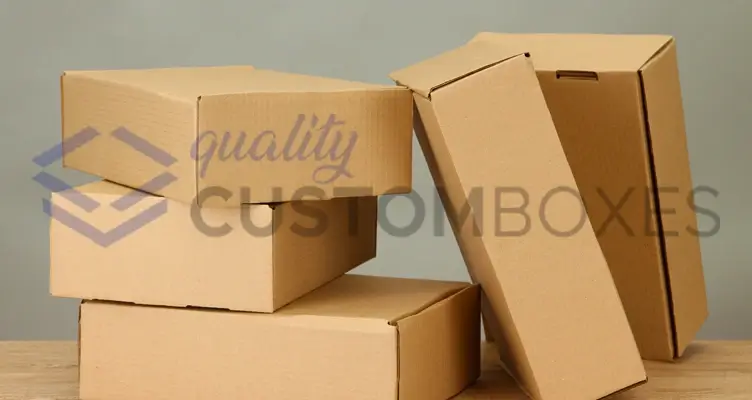
Paperboard boxes are the most versatile option, offering a wide range of sizes, shapes, and printing capabilities. They are ideal for a variety of products, from clothing and toys to books and electronics. They are customizable, lightweight, cost-effective, and good for displaying product information.
Foil Sealed Bags
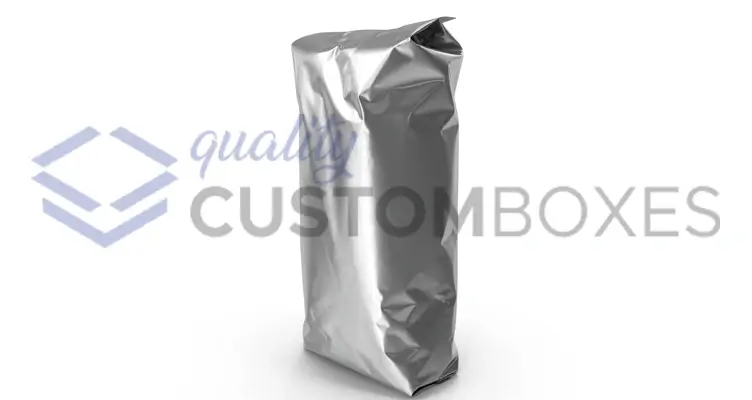
Foil-sealed bags are perfect for lightweight, portable products like snacks, coffee, or personal care items. The tamper-evident seal ensures product freshness and security. It is lightweight, flexible, protects against moisture and odors, suitable for single-serving items.
Rigid Boxes
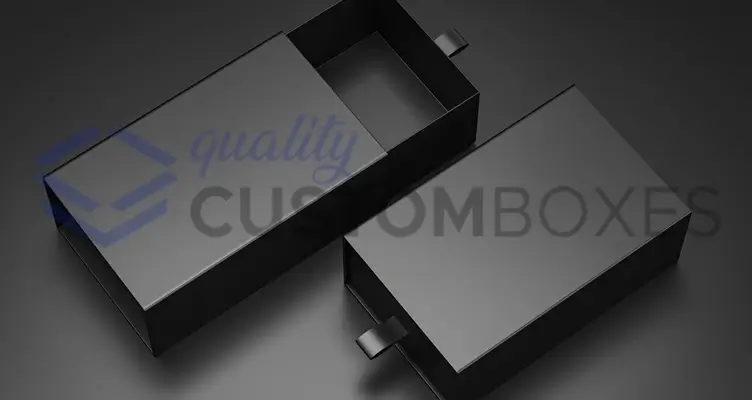
Rigid boxes are known for their luxurious feel and durability. They are often used for high-end products like jewelry, perfume, or electronics. They offer high-quality presentation, and excellent protection, ideal for premium branding and gifting.
Corrugated Boxes
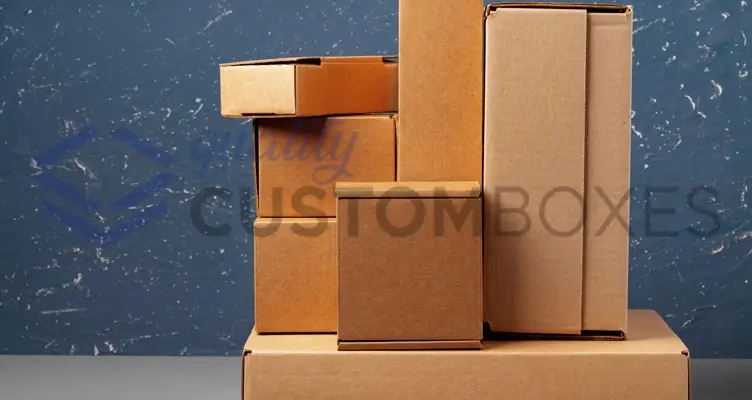
Corrugated boxes are the go-to choice for shipping and storing products. Their strong, layered construction ensures safe transport of even heavy items. They offer excellent protection during shipping and storage, are customizable, suitable for large or bulky items.
Packaging Solutions from Quality Custom Boxes
Quality Custom Boxes offers customizable packaging solutions in various sizes, shapes, and styles to meet every customer’s needs at the most competitive prices while delivering flawless printed results. We cater to both short and long-run orders, utilizing premium materials such as Cardboard, Kraft, and Corrugated to provide unparalleled printing and packaging options.
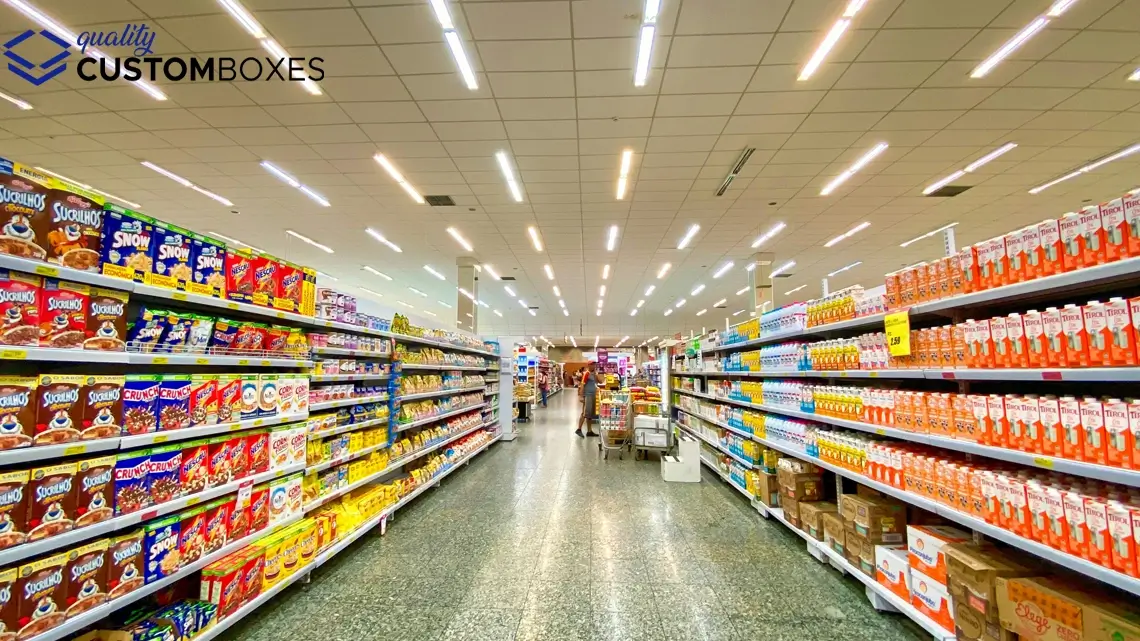
 No products in the cart.
No products in the cart.